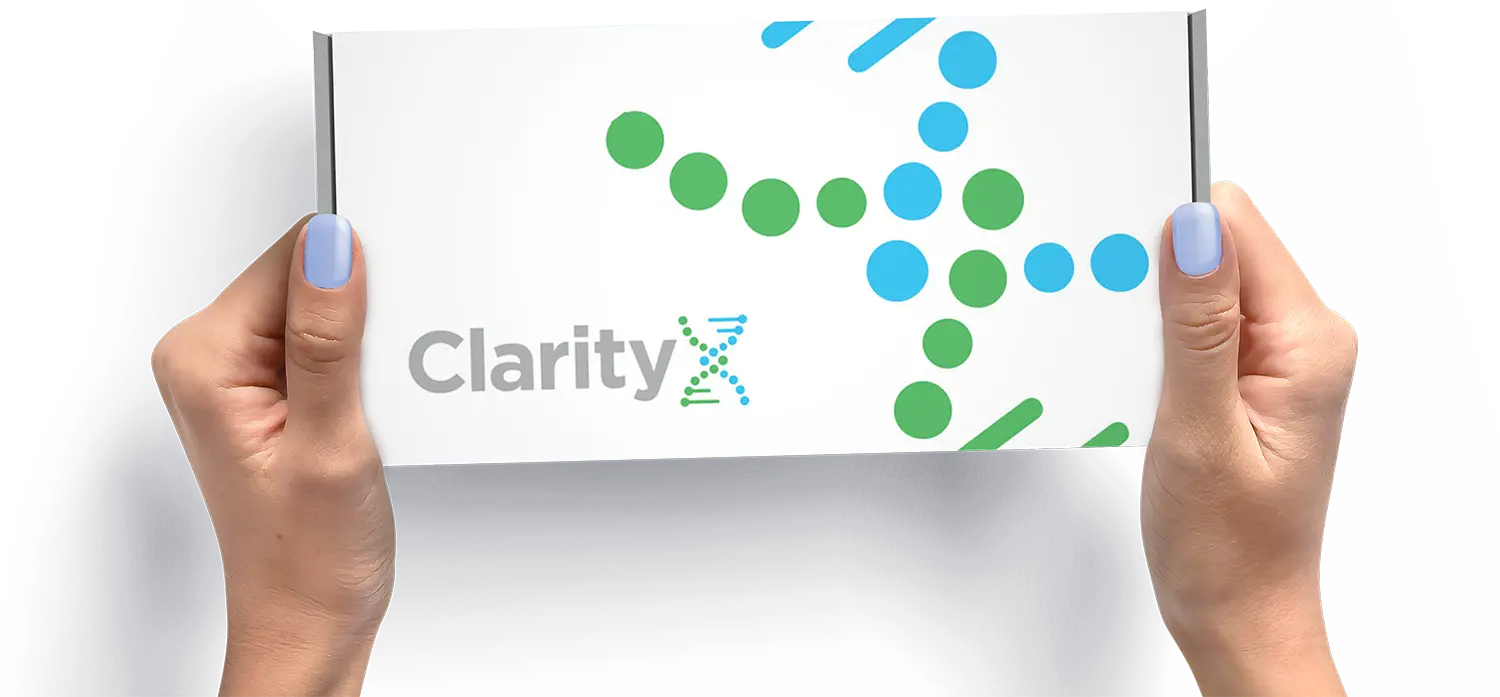Read our Cymbalta vs. Lexapro guide to discover the differences between these antidepressants and how to pick the right prescription drug for you.
Cymbalta® vs. Lexapro®
While there is a wide range of depression and anxiety treatments out there, many healthcare providers turn to prescription drugs like Cymbalta and Lexapro. Unfortunately, unless you’ve tried them before, it can be dealing with depression and/or anxiety isn’t easy. Although these are two different conditions, both of them can negatively impact careers, relationships, and ambitions. If you’re struggling with a mental health condition, it’s important to seek treatment.
Difficult to discern which drug is better for your body. To help patients decide, we’ve assembled a Cymbalta vs. Lexapro guide that breaks down their differences. Learn more about how these drugs work, the possible side effects, recommended dosage amounts, and the benefits of DNA testing.
Cymbalta vs. Lexapro: What Are They?
Cymbalta and Lexapro are both FDA-approved for the treatment of major depressive disorder (MDD), and generalized anxiety disorder (GAD). They alter the levels of neurotransmitters in the brain, which helps treat major depressive disorder and generalized anxiety disorder. Cymbalta is also approved to help with fibromyalgia, diabetic peripheral neuropathy, and chronic musculoskeletal pain. There are also off-label uses of Lexapro that a medical doctor will prescribe for such as premenstrual dysphoric disorder (PMDD), posttraumatic stress disorder (PTSD), panic attacks, social anxiety disorder (SAD), and obsessive-compulsive disorder (OCD).
However, they accomplish their effects through different means. Here’s a more in-depth breakdown of these medications.
Cymbalta
Cymbalta (duloxetine) is a serotonin-norepinephrine reuptake inhibitor (SNRI). It works by increasing the levels of the following neurotransmitters:
- Serotonin: This hormone is thought to stabilize mood and increase satisfaction.
- Norepinephrine: Norepinephrine can improve mood, concentration, and energy. Think of it as the alert, activeness, and attentive chemical.
- Dopamine: Dopamine, also called the “feel-good” hormone, is linked to pleasure, happiness, and motivation. Too much or too little dopamine can lead to serious issues. A lot of mental health and neurological conditions are affected by the amount of dopamine you release and the receptors you have that take the input from it.
By preventing neurons from absorbing these substances, Cymbalta can keep them in the brain for longer periods of time. The result is better physical and mental health, which in turn helps treat symptoms of major depressive disorder and anxiety disorders.
A recent head-to-head study performed in 2020 found that SNRIs increased dopamine concentrations in both the front and middle of the brain (mPFC and NAc) and showed faster antidepressant effects than SSRIs. Though, this is specific to chemical findings and not directly based on clinical short-term studies or long-term studies.
Cymbalta first gained approval for use in the United States under the FDA in 2004 and was produced by Eli Lilly. In the prior times, Eli Lilly was running into an issue with liver toxicity and QTc prolongation due to manufacturing problems (cGMP), but this was resolved in before the 2004 approval. Later in 2007, Eli Lilly, created a delayed-release capsule for use.
Lexapro
Lexapro (escitalopram) is a common treatment for major depressive disorder and anxiety disorders. As a selective serotonin reuptake inhibitor (SSRI), it focuses specifically on boosting serotonin levels in the brain. In addition to improving moods, serotonin can do the following:
- Sleep maintenance by working with melatonin and stimulating wakefulness
- Helps with bowel movements and function
- Maintain sexual function
- More serotonin can lead to happier emotions and a healthier lifestyle.
By keeping extra serotonin in the brain, Lexapro can help the brain by building back better pathways to cope with stress and to adapt. Though the exact mechanism behind it is always being investigated and further under development by scientists.
Cymbalta vs. Lexapro: Common Side Effects
Whether you take Cymbalta or Lexapro, there’s a chance of experiencing unwanted side effects. The chart below outlines which side effects are common for Cymbalta users, Lexapro users, and both.
| Cymbalta | Lexapro | |
| Nausea | Yes | Yes |
| Indigestion | No | Yes |
| Diarrhea/constipation | Yes | Yes |
| Dry mouth | Yes | Yes |
| Higher blood pressure | Yes | No |
| Headaches/dizziness | Yes | No |
| Drowsiness | Yes | Yes |
| Lower appetite | Yes | Yes |
| Decreased sexual desire | No | Yes |
*Sexual performance, desire, and satisfaction with anxiety and depression is decreased in general. Cymbalta may further decrease sexual enjoyment and a 6% decreased libido in males. Lexapro too has a 6% decrease in sexual libido with males but is mainly known for a 12% instance of primary ejaculatory delay in males. For females, both medications decrease libido by 2%.
Ideally, some side effects should subside or are better tolerated as your body gets used to the change in neurotransmitters, specifically serotonin. If side effects remain or worsen, you may need to adjust your dosage.
Regarding the safety of escitalopram, if you have already had a condition called QT prolongation or are taking medications that increase this interval already in your regimen, do make sure your healthcare team knows before initiating therapy.
For Duloxetine, do not use this medication in cases of liver failure or severe renal dysfunction.
Lexapro and Duloxetine are labeled as Pregnancy Class C medications (risk to fetal development cannot be ruled out) that have the ability to go into the breast milk, require caution for breastfeeding mothers, and should be talked about with your healthcare provider.
Both medications that are used to treat major depressive disorder have black box warnings for the risk of suicidal thinking. Though the risk of suicidal thinking is lower, it still is significant enough that one should always keep in mind that if these thoughts happen it is imperative to tell your healthcare team or call the National Suicide Prevention Hotline at 800-273-8255. The mechanism behind why these medications can cause suicide is not definitively known at this moment.
Cymbalta vs. Lexapro: Recommended Dosage Amounts
When deciding on a dosage amount, healthcare providers generally consider the following factors:
- Age
- Other medications you currently take
- The condition you need treatment for
- Other medical conditions you have
Of course, they also have to consider the potency (or strength) of the medication they’re prescribing. Since Cymbalta and Lexapro have different potencies, they come with different recommended dosage amounts. Let’s take a closer look at how they’re prescribed.
Cymbalta
Cymbalta takes about two hours to absorb and is available in three different dosages:
- 20 mg
- 30 mg
- 60 mg
When treating major depressive disorder, most healthcare providers start with a 40 mg to 60 mg dose. Over time, this can be increased up to 120 mg daily. Though doses great than 60mg/day do not show a clinical significance when treating major depressive disorder (MDD).
Lexapro
Lexapro can take anywhere from three to four hours to absorb and is available in the following amounts:
- 5 mg
- 10 mg
- 20 mg
New users generally start with 10 mg a day. As the body builds a tolerance for the drug, the dosage may be increased up to 20 mg per day. Though a clinician can warrant a lower starting dose due to the metabolic or clinical presentation of a patient.
If you have missed a dose of either medication, it is important to relay the time that you normally take the medication and the delay to your pharmacist or healthcare provider so they can better serve you to make sure that you are remaining on the right amount of medication without the risk of doubling up or falling too low.
Both higher-dosed Cymbalta and Lexapro should not be abruptly stopped. Sometimes one could have a panic attack or worsening depression and believe it is a good idea to stop therapy, but this could lead to withdrawal side effects such as nausea, dizziness, and lethargy. Always talk to your healthcare team about all the side effects and issues you are having with these medications before stopping right away.
Cymbalta vs. Lexapro: Frequently Asked Questions
Here are some of the most commonly asked questions about Cymbalta and Lexapro.
Can Cymbalta and Lexapro be taken together?
Since Cymbalta is an SSNRI and Lexapro is an SSRI, some people falsely assume that they can be taken together to further reduce the symptoms of major depressive disorder. However, taking both drugs at the same time increases the risk of serotonin syndrome, a dangerous condition caused by excessive serotonin. It is potentially life-threatening. It can cause the following effects:
- Increased blood pressure
- Sweating and shivering
- Vision problems
- Fast heart rate
- Change in mental status
- Fever
Can children take Cymbalta or Lexapro?
Children under 18 years of age should not take Cymbalta, while children under 12 years of age should not take Lexapro. In rare cases, healthcare providers may decide that a child should take these medications — when this happens, they will carefully determine a unique dosage.
Which medication is better for me?
There’s no right answer when it comes to choosing between these medications — it all depends on whether you experience side effects. In the past, the only way to determine this was by trying both drugs. Now, there’s a better solution: pharmacogenetic testing.
DNA Testing: Make Better Health Decisions Today!
Pharmacogenetic testing, also known as genetic or DNA testing, examines your genetic sequences for variations that may affect how you respond to certain medications.
With this information, you’ll know whether you need to increase the dosage, decrease it or avoid medication altogether.
Get a DNA Test Today
Do you and your healthcare provider want to learn more about your body’s response to Cymbalta vs. Lexapro? If so, ClarityX can help. We offer a ClarityX Mindwell Test that will break down and identify the best medications based on your unique DNA.
The ClarityX Mindwell Test covers over 130 FDA-approved mental health medications.
The test focuses on mental health conditions including Clinical Depression, Anxiety Disorder, Bipolar Disorder, ADHD / ADD, OCD, and PTSD.
ClarityX tests your individual response to antidepressants, antipsychotics, anxiolytics, SSNRI’s and SSRI’s find out more by visiting www.clarityxdna.com





